Pros
Cons
Introduction
Product Overview
{{section_header}}{{section.name}}{{/section_header}}
Get to know the Koss Porta Pros.
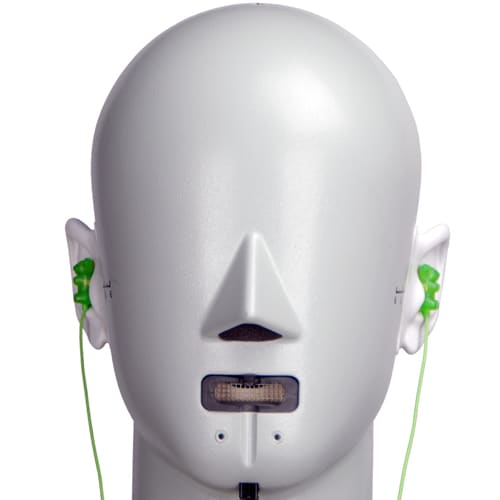
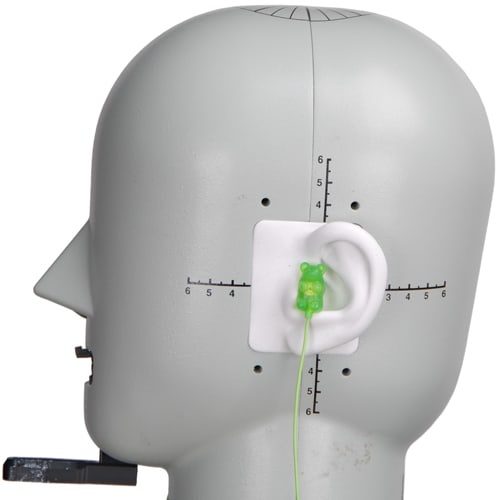
Speakers
{{section_header}}{{section.name}}{{/section_header}}
The speaker element of the {{product.name}}s is normally guarded by a thin foam, not pictured here. As you can see, there's not a ton to protect the speaker element, but there typically isn't with headphones at this price point.
Back
{{section_header}}{{section.name}}{{/section_header}}
Oh, there's lots to see here! To the uninitiated, the backs of the {{product.name}}s look downright bizarre, but they have their own sort of 80's charm to them, complete with near-useless switches and an odd chrome angular design.
Band
{{section_header}}{{section.name}}{{/section_header}}
Not only is the metal band collapsible, but it is also ultra light and foldable to enhance its portability.
Cable
{{section_header}}{{section.name}}{{/section_header}}
Sitting at 3.93 feet long, the cable of the {{product.name}}s is composed of a relatively thin wire, and equally thin insulation. There are no in-line accessories on the {{product.name}}.
Terminating that bland as heck cable is an equally bland 1/8th inch plug. Nothing much to see here.
In the Box
{{section_header}}{{section.name}}{{/section_header}}
Upon tearing open the package, you will find the headphones, assorted documentation, and a carrying pouch.
Durability
{{section_header}}{{section.name}}{{/section_header}}
Despite the fact that the {{product.name}}s are made of a light plastic and metal construction, we don't get the feeling that they will suffer much if they're dropped, knocked off the table, or jammed in a bag. Just be careful not to tug at the cables, and your {{product.name}}s should last you a while.
Aesthetics
{{section_header}}{{section.name}}{{/section_header}}
The {{product.name}}s are certainly something. Made with a combination of black plastic, chrome patterning and a metal band, they definitely look like they are from the early walkman era in the 80s. For some people, this is a desirable aesthetic, but it isn't for everyone.
Frequency Response
{{section_header}}{{section.name}}{{/section_header}}
You know, it looks bad at the higher end, but it's really not that terrible. Sure, it strays outside of our ideal limits in the upper end of the mids and highs, and yes: it is very erratic in the highest end. Overall though, the frequency response is relatively even, save for several errors, and most listeners will not be able to hear anything wrong with their music.
Still, audiophiles will be quick to point out that the response in the highs is not something that they would like, and that's fine: this is a pair of sub $50 headphones. They're not supposed to be a high-end set of cans.

Click here for more information on our frequency response test.
Distortion
{{section_header}}{{section.name}}{{/section_header}}
Overall there isn't much to report in terms of distortion, save for a tiny, sub-1% peak in the mids. You won't hear it unless you're a finely tuned robot, so don't worry too much.
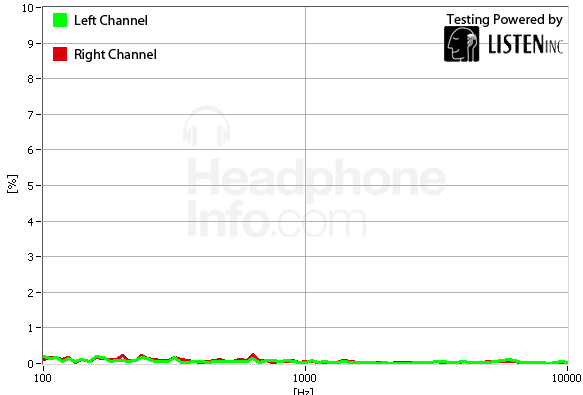
Click here for more information on our frequency response test.
Tracking
{{section_header}}{{section.name}}{{/section_header}}
While there is a general 2dB channel preference to the right, it's an error that will not be prominently audible, and is actually not all that bad, especially considering how even the line is.
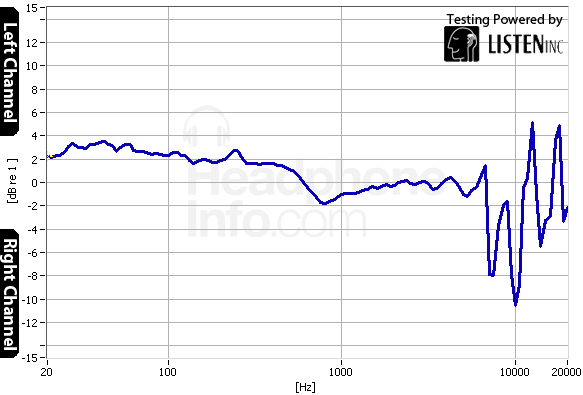
Click here for more information on our frequency response test.
Isolation
{{section_header}}{{section.name}}{{/section_header}}
Despite their billing as cans made for going outdoors, the {{product.name}}s don't attenuate much noise at all. You should be able to hear everything that goes on around you virtually unimpeded: cars will be loud, coworkers will be annoying, and crying babies will blow out your eardrums.

Click here for more information on our isolation test.
Leakage
{{section_header}}{{section.name}}{{/section_header}}
On-ear headphones typically leak a bunch of noise, and the {{product.name}}s take this to a whole new level of annoying if you listen to your tunes loudly. Try to control your volume when you're around other people, but that might ruin your experience when considering the almost nonexistent isolation.
Click here for more information on our leakage test.
Maximum Usable Volume
{{section_header}}{{section.name}}{{/section_header}}
Lovers of loud music should be reassured that the {{product.name}}s can hang with the best of them up until about 115.73dB, which is more than your typical iPod can output. Still, if you manage to max out your volume, we caution you to keep your sessions to a minimum, as damaging your hearing is a very real possibility.
Click here for more on our maximum usable volume test
Short-Term Use
{{section_header}}{{section.name}}{{/section_header}}
The reason most budget headphones have light, plasticine foam is because it's soft to the touch, and lighter cans can get away with it because it helps them to be very comfortable. That's what you get with the {{product.name}}s: a super light set of headphones that softly cradle your head. It's very easy to forget you're wearing them.

Extended Use
{{section_header}}{{section.name}}{{/section_header}}
Over time, the fit does not change, and after 6 hours there were no new issues to report. Same marks here.
Customizability
{{section_header}}{{section.name}}{{/section_header}}
Aside from fiddling with the switches on the side, there really isn't a lot you can do to make the {{product.name}}s your own. It's really not that big of a deal though, as they are a very basic set of headphones.
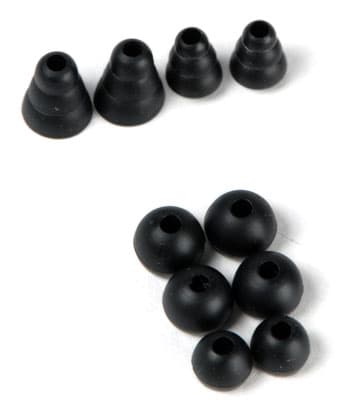
Cable Connectivity
{{section_header}}{{section.name}}{{/section_header}}
Most headphones at their price point are essentially the basic, bare-bones cans people buy to fit mobile listening, and it shows with the {{product.name}}s. Sporting a standard 3.93-foot cable terminated with a 1/8th plug, the {{product.name}} will work with just about any mobile device. Keep in mind, however, that there is no remote or microphone, so smartphone users beware.
Portability
{{section_header}}{{section.name}}{{/section_header}}
These cans are insanely portable. Not only are they super-light, but they fold in on themselves, and fit inside a relatively small carrying pouch for safe travel. This pouch can then be stuffed into a large pocket, or small bag, and you should have no problems taking these wherever you go.
Maintenance
{{section_header}}{{section.name}}{{/section_header}}
Entry-level headphones typically do not offer much in the way of maintenance options, and the {{product.name}}s are very much the same in this regard: should something break, there isn't much that can be done except throw the {{product.model}}s away and buy new cans.
Design
{{section_header}}{{section.name}}{{/section_header}}
By design, the {{product.name}}s are quite different from the tiny, frustrating-as-hell earbuds, but they're also quite a bit more expensive. Additionally, they'll withstand a bit more abuse, but their added bulk and thin cables mean their connections will be slightly more easy to break if you have a habit of jamming your headphones in a pocket.
Frequency Response
{{section_header}}{{section.name}}{{/section_header}}
As much as it's perplexing to see, the Apple earbuds have the better frequency response, though they absolutely leave fans of bass high and dry. If you like the lower frequencies, stick with the {{product.name}}s.
Distortion
{{section_header}}{{section.name}}{{/section_header}}
No contest here: the Apple earbuds are flat-out terrible when it comes to distortion, while the {{product.name}}s are pretty okay.
Tracking
{{section_header}}{{section.name}}{{/section_header}}
Both have passable tracking, but that of the earbuds were worse overall.
Isolation
{{section_header}}{{section.name}}{{/section_header}}
Neither set of headphones attenuates much noise at all.
Comfort
{{section_header}}{{section.name}}{{/section_header}}
This one appears tough to compare at first, because many people like the Apple earbuds. However, for a lot of people, they fall out of your ears the second you do anything requiring moving, slide out of place, and tug at your tragus. The {{product.name}}s do not, and are so light that you can basically forget that they're on your head.
Verdict
{{section_header}}{{section.name}}{{/section_header}}
If you're looking for an improvement over your iPod's included headphones, the {{product.name}}s are absolutely a large step up. Not only are they on the more affordable end of the spectrum, but they do provide decent audio quality, where the Apple earbuds do not.
Design
{{section_header}}{{section.name}}{{/section_header}}
While it's obvious to most that in-ears are far different than on-ears, but there are some differences beyond that worth pointing out: namely that the Klipsch S4i/as have a remote to enable smartphone use, and that they are less durable, but more portable than the {{product.name}}s.
Frequency Response
{{section_header}}{{section.name}}{{/section_header}}
Both have a decent frequency response, but that of the Klipsch in-ears will satisfy a larger crowd, as they have fewer errors, and emphasize bass pretty well.
Distortion
{{section_header}}{{section.name}}{{/section_header}}
Neither set of headphones has an audible level of distortion, but they both have their minor blemishes.
Tracking
{{section_header}}{{section.name}}{{/section_header}}
The Klipsch S4is are nearly perfect in this regard, while the {{product.name}}s have some problems.
Isolation
{{section_header}}{{section.name}}{{/section_header}}
Because the S4is fit inside your ear canal, they block out a bunch more noise by virtue of the fact that they can physically prevent it from reaching your eardrum. The {{product.name}}s on the other hand, attenuate almost no noise.
Comfort
{{section_header}}{{section.name}}{{/section_header}}
While comfort is a largely subjective measure, there are those out there who can't use in-ears because jamming bits of plastic and rubber into an orifice that was never meant to play host to a foreign object is painful for them. The {{product.name}}s are very comfortable, but you'll have to try both out in order to determine for yourself which is the better set of headphones in this regard.
Verdict
{{section_header}}{{section.name}}{{/section_header}}
The Klipsch S4is offer a sound quality bump for the extra money you'd pay, but they're still very affordable at a sub-$100 price point. They're not as durable or comfortable as the {{product.name}}s, but they are more versatile, as they can be used as a headset as well. If you don't mind spending the extra money for a bump in audio quality, the Klipsch S4is (or S4as for Android users) are a great buy.
Design
{{section_header}}{{section.name}}{{/section_header}}
Though they are both technically on-ear headphones, the Cassettes can be removed from their band and used in any hodie, beanie, or snowboarding helmet with an open slot for them (mainly Skullcandy branded). The Cassettes are also more durable, as their cord can be replaced, and they can be used with a smartphone, as they have a remote and microphone.
Frequency Response
{{section_header}}{{section.name}}{{/section_header}}
As you'll see as a trend here, the Cassettes have far worse audio quality overall. Here, we see the horrifyingly bad frequency response, overemphasizing mids, and underemphasizing just about everything else.
Distortion
{{section_header}}{{section.name}}{{/section_header}}
The Cassettes have a higher overall level of distortion, but the {{product.name}}s have only a couple inaudible blemishes.
Tracking
{{section_header}}{{section.name}}{{/section_header}}
{{product.name}}s seem to have a slight channel preference to the right, but it's an inaudible blemish. The Cassettes, on the other hand, have very good tracking indeed.
Isolation
{{section_header}}{{section.name}}{{/section_header}}
Neither isolate well, but the Cassettes technically block out more sound.
Comfort
{{section_header}}{{section.name}}{{/section_header}}
Both sets of headphones are extremely comfortable, but the Cassettes can also be placed in different holding mechanisms, which can take all the pressure off your head as well. If you're using headphones to bomb down a mountain on skis or a snowboard, you're going to want the Cassettes.
Verdict
{{section_header}}{{section.name}}{{/section_header}}
Honestly, it really depends on your intended use to say for sure which headphones are better. The {{product.name}}s are better if you're looking for audio quality at a low price point, and the Cassettes are better if you're into extreme sports, or need a stupidly-durable set of cans at the expense of audio quality. Both are around $50.
Conclusion
{{section_header}}{{section.name}}{{/section_header}}
Considering their price point, it's really hard to ask much more of the {{product.name}}s. Not only are they extremely portable, but they're comfortable, and have good audio for about $50, and that is one heck of a bargain if you're looking for entry-level headphones.
There are tradeoffs, however, especially if you use your smartphone to listen to music. There is no remote or microphone, they aren't that durable, and they don't attenuate basically any noise. Still though, they do fit their intended role as affordable, portable audio quality, and that alone is laudable.
If you're hurting for cash, or you just don't want to spend a lot to get a lot, the {{product.name}}s are a good way to get decent headphones for a low price, as long as you're okay with their known limitations. If you're in the market for comfort, portability, and entry-level price, the {{product.name}}s fit the bill famously.
Meet the tester
A seasoned writer and professional photographer, Chris reviews cameras, headphones, smartphones, laptops, and lenses. Educated in Political Science and Linguistics, Chris can often be found building a robot army, snowboarding, or getting ink.
Checking our work.
Our team is here to help you buy the best stuff and love what you own. Our writers, editors, and experts obsess over the products we cover to make sure you're confident and satisfied. Have a different opinion about something we recommend? Email us and we'll compare notes.
Shoot us an email

